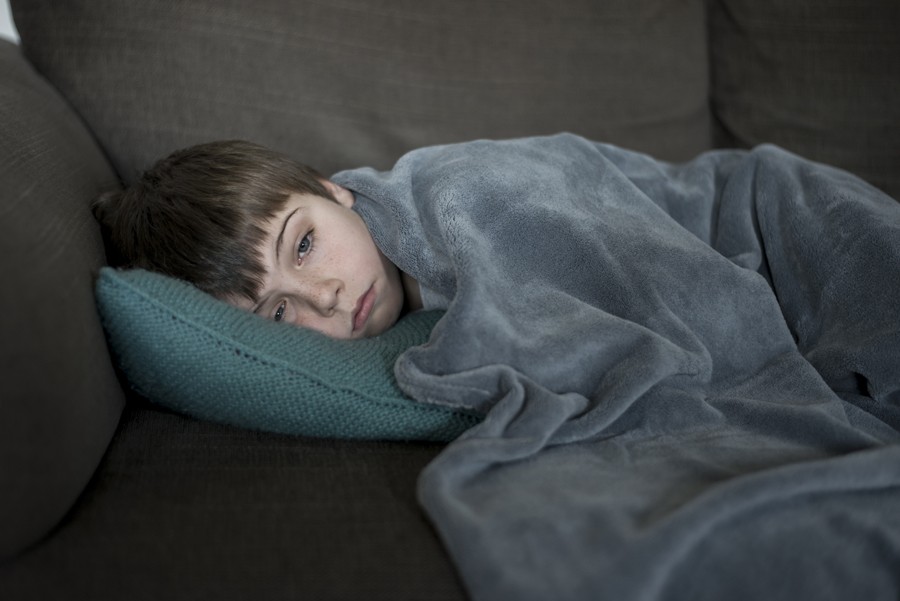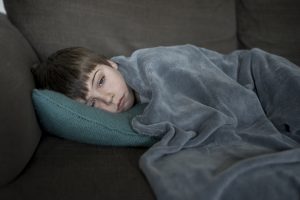Children in the Netherlands remain ill with post-treatment Lyme borreliosis syndrome

Twelve out of 28 children with Lyme disease evaluated at an academic medical center in the Netherlands remained ill with post-treatment Lyme borreliosis syndrome (PTLBS). These 12 children presented with various complaints, including fatigue, general malaise and pain. There were no other medical explanations for their complaints and all were positive for Borrelia burgdorferi sl based on two-tier testing of C6-Lyme enzyme immunoassay (EIA) and IgG/IgM immunoblots. [1]
The authors concluded, however, that the symptoms were not due to an active infection, since they lasted longer than 6 months. And therefore, the patients would not benefit from additional rounds of antibiotic treatment. “As more than 50% of the children had a duration of symptoms of more than 6 months, this further points towards other disorders than LB eliciting the complaints of the studied patients,” according to Rashid from the Amsterdam Multidisciplinary Lyme Center located within the Academic Medical Center (AMC) in Amsterdam.

Patients with early Lyme disease report having pain, fatigue and post-treatment Lyme disease syndrome (PTLDS) following a three-week course of doxycycline, according to a study by Johns Hopkins University School of Medicine. Out of 107 patients, six (6%) had PTLDS. [2]
In the John Hopkins’ study, retreating patients with antibiotics was considered. “Of the 107 cases, 8 cases were re-treated with antibiotics after the initial three-week course of doxycycline because there was development of new objective findings (e.g., new neuropathy; 5 cases) or the EM rash did not fade after initial treatment or new rashes developed in other areas of the body (3 cases),” explains Bechtold from the Department of Physical Medicine and Rehabilitation at Johns Hopkins University School of Medicine. [3]
It would be reasonable to look a second time at the children with PTLBS, described in the Netherlands study, as to whether retreatment might be helpful.
Related articles:
No neurologic damage in three children with Lyme disease and Powassan virus
Tick bite prevention methods are failing our children
12-year-old boy suffers cardiac arrest due to Lyme disease
References:
- Rashid AN, van Hensbroek MB, Kolader M, Hovius JW, Pajkrt D. Lyme Borreliosis in Children: A Tertiary Referral Hospital Based Retrospective Analysis. Pediatr Infect Dis J. 2017.
- Aucott JN, Soloski MJ, Rebman AW, et al. CCL19 as a Chemokine Risk Factor for Post-Treatment Lyme Disease Syndrome: A Prospective Clinical Cohort Study. Clin Vaccine Immunol. 2016.
- Bechtold KT, Rebman AW, Crowder LA, Johnson-Greene D, Aucott JN. Standardized Symptom Measurement of Individuals with Early Lyme Disease Over Time. Arch Clin Neuropsychol. 2017;32(2):129-141.




Carol
09/19/2017 (5:25 am)
My first test was done in Holland in 2006. I keep getting reinfected.
Dispite being very ill the NHS still ignores my condition.
They have put me in a psychiatric hospital 3 times after coming into hospital very sick because they don’t like the condition. It annoys them.
They have taken me off my antibiotics and given me psychatric medication.
chris
09/01/2017 (4:34 pm)
“Of the specifically referred Lyme positive patients, eleven (39.3%) had a definitive LB diagnosis”
so what sort of “modified, previously published classification system” excludes 60.7% of positive test results.
Dr. Daniel Cameron
09/04/2017 (10:23 pm)
Published trials tend to focus their focus on the patients who meet their predefined criteria. It is clear from the trial that many patients do not meet this strict criteria. Doctor learn what they can from the few who meet strict criteria and have to use clinical judgment to determine which patients who do not meet the strict criteria who might benefit from treatment.